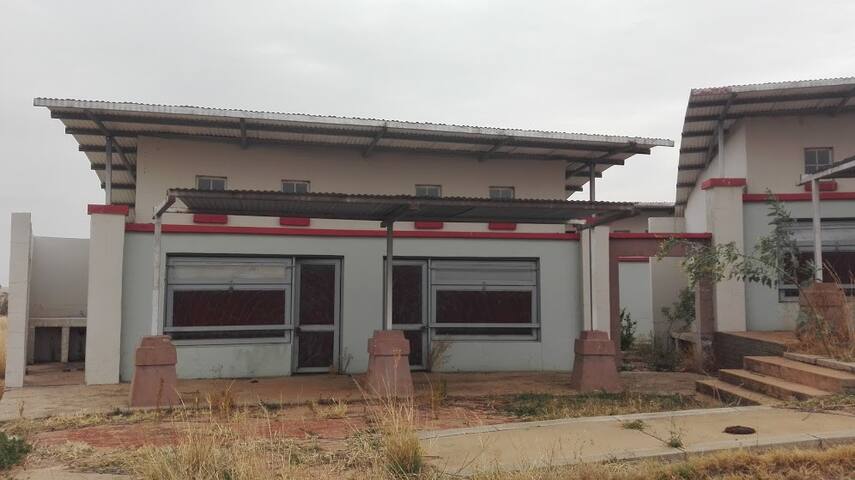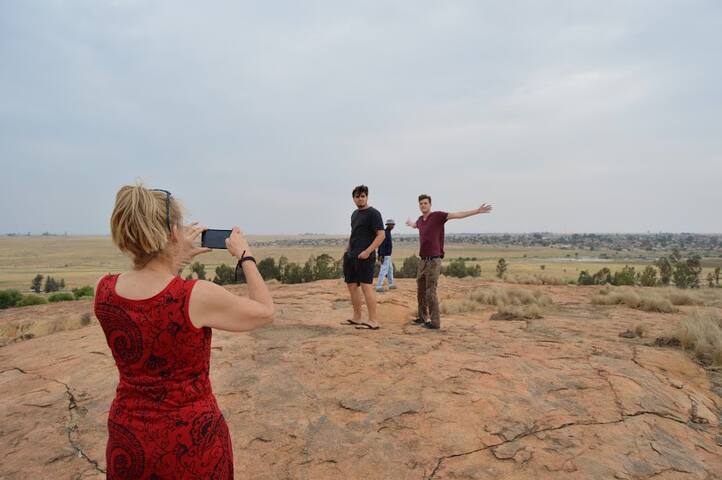Sightseeing
Vredefort Dome, approximately 120 km south-west of Johannesburg, is a representative part of a larger meteorite impact structure, or astrobleme. Dating back 2,023 million years, it is the oldest astrobleme yet found on Earth. With a radius of 190 km, it is also the largest and the most deeply eroded. Vredefort Dome bears witness to the world’s greatest known single energy release event, which had devastating global effects including, according to some scientists, major evolutionary changes. It provides critical evidence of the Earth’s geological history and is crucial to understanding of the evolution of the planet. Despite the importance of impact sites to the planet’s history, geological activity on the Earth’s surface has led to the disappearance of evidence from most of them, and Vredefort is the only example to provide a full geological profile of an astrobleme below the crater floor. (https://whc.unesco.org/en/list/1162/)
The Vredefort crater is the largest verified impact crater on Earth. More than 300 kilometres (190 mi) across when it was formed,[1][2] what remains of it is in the present-day Free State province of South Africa. It is named after the town of Vredefort, which is near its centre. Although the crater itself has long since been worn away, the remaining geological structures at its centre are known as the Vredefort Dome or Vredefort impact structure. The crater is estimated to be 2.023 billion years old (± 4 million years), with impact being in the Paleoproterozoic Era. It is the second-oldest known crater on Earth. (https://en.wikipedia.org/wiki/Vredefort_crater)
In 2005, the Vredefort Dome was added to the list of UNESCO World Heritage sites for its geologic interest.
13 (рекомендации местных жителей)
Vredefort crater
The Vredefort crater is the largest verified impact crater on Earth. More than 300 kilometres (190 mi) across when it was formed,[1][2] what remains of it is in the present-day Free State province of South Africa. It is named after the town of Vredefort, which is near its centre. Although the crater itself has long since been worn away, the remaining geological structures at its centre are known as the Vredefort Dome or Vredefort impact structure. The crater is estimated to be 2.023 billion years old (± 4 million years), with impact being in the Paleoproterozoic Era. It is the second-oldest known crater on Earth. (https://en.wikipedia.org/wiki/Vredefort_crater)
In 2005, the Vredefort Dome was added to the list of UNESCO World Heritage sites for its geologic interest.
Vredefort Dome
Neighborhoods
Parys (pronounced /ˈpɑːreɪs/) is a town situated on the banks of the Vaal River in the Free State province of South Africa. The name of the town is the Afrikaans translation of Paris. The name was given by a German surveyor named Schilbach who had participated in the Siege of Paris during the Franco-Prussian War and the location next to the Vaal reminded him of Paris on the River Seine. The area of Parys also includes the two townships Tumahole and Schonkenville. (https://en.wikipedia.org/wiki/Parys)
15 (рекомендации местных жителей)
Parys
Parys (pronounced /ˈpɑːreɪs/) is a town situated on the banks of the Vaal River in the Free State province of South Africa. The name of the town is the Afrikaans translation of Paris. The name was given by a German surveyor named Schilbach who had participated in the Siege of Paris during the Franco-Prussian War and the location next to the Vaal reminded him of Paris on the River Seine. The area of Parys also includes the two townships Tumahole and Schonkenville. (https://en.wikipedia.org/wiki/Parys)



